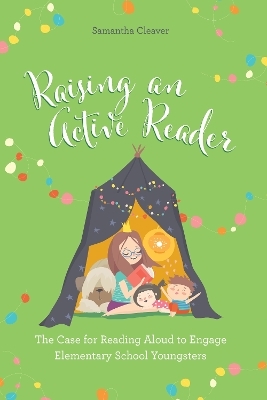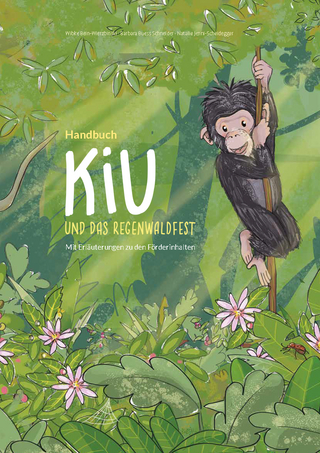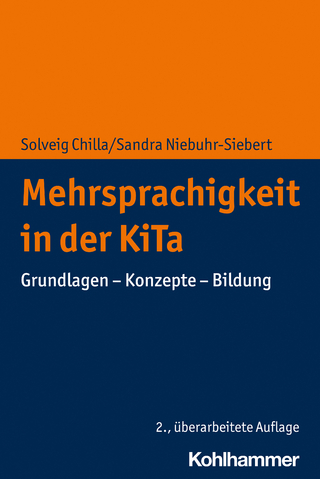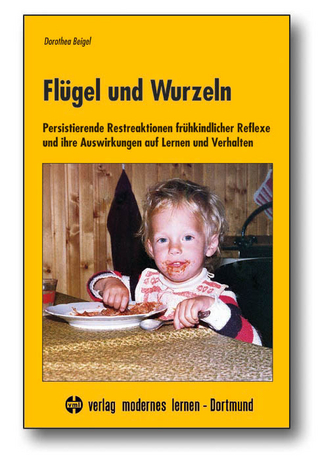
Raising an Active Reader
Rowman & Littlefield (Verlag)
978-1-5381-9118-7 (ISBN)
"This book will prove a valuable resource for parents, teachers, and librarians on the vital topic of reading aloud." Library Journal, Starred Review
Parents and teachers know that reading aloud to children is important, and many parents of infants and toddlers read aloud to them daily. However, when children start to read on their own, parents often stop reading aloud. But these early elementary school years are actually a perfect time to build vocabulary and comprehension skills through reading aloud and Active Reading.
Raising an Active Reader makes clear the process of learning to read, how Active Reading fits into raising strong readers, and what adults can do to encourage strong language, comprehension, and vocabulary in children in grades K-3. This book extends on the ABCs of Active Reading (Ask Questions, Build Vocabulary, and make Connections) as they apply to older children for picture books, chapter books, and novels. It provides parents and teachers with examples, clear explanations, and ideas for making one-on-one or small group read aloud sessions a powerful way to build children’s early literacy and language skills, all while creating a lifelong love of reading.
Samantha Cleaver, PhD, studied read aloud and developed Active Reading during her work with Read Charlotte, a community-wide initiative to double the number of students reading on grade level by 3rd grade in Mecklenburg County, NC. She holds a doctorate in special education with a focus on literacy interventions from the University of North Carolina at Charlotte.
Table of Contents
Acknowledgments
Introduction
Active Reading: Preparing Your Child for Reading Success
What is Active Reading?
The Case for Read Aloud when Kids can Read on Their Own
Ready to Read with Me More
Chapter 1: Keep Reading with Me
Active Reading in the Early Elementary Years
Elementary School-Aged Children Learn (A Lot) from Picture Books
Active Reading: Evidence-Based Bedtime Reading
Raising Active Readers
ABCs of Active Reading with Elementary Schoolers
A: Ask Questions
B: Build Vocabulary
C: Make Connections
Keep Reading with Me
What to Remember
Chapter 2: I Can Read on my Own!
What is Reading?
Reading and your Elementary-Schooler
The Big 5: What it Takes to Read
Phonemic Awareness
Phonics
Fluency
Vocabulary
Comprehension
Language: The Foundation for Reading
Active Reading and the Home-School Connection
How do Parents Contribute to Reading Success?
More Ways to Help Your Child with Reading at Home
Let’s Read!
What to Remember
Chapter 3: Books, Books, Books: Building a Library for a Growing Reader
Active Reading Wide and Deep
Your Child’s Reading “Diet”
Illustrated Chapter Books
Myths, Fairy Tales, and Folk Tales
Your Favorites
Your Child’s Perfect Fit
Poetry
Nonfiction
Books that are Beyond Their Years
The Latest, Greatest Books
Windows and Mirrors: Cultivating Diversity and Empathy through Books
Books as Windows
Books as Mirrors
Books They Read On Their Own
Leveled Readers
My First Chapter Books
Tree Books vs. E-Books
Books Matter
What to Remember
Chapter 4: Ask Questions
The Importance of Conversation
Why do we Ask Questions?
Asking Questions about Stories
Story Questions
Using Questions to Help Children Understand Difficult Texts
1. What Does the Text Say?
2. How Does the Text Work?
3. What Does the Text Mean?
4. What Does the Text Inspire You to Do?
Thinking Critically about Stories
How do Children Develop Critical Thinking?
How to Raise a Critical Thinker
Get Kids to Ask Questions
Tell Me More
What to Remember
Chapter 5: Build Vocabulary
Vocabulary is Important, Imperative, and Significant
How Children Learn Words
Finding Words: The Power of Books
Rare Words
Academic Words
Understanding Phrases
Choosing Words during Active Reading
Building Your Child’s Vocabulary through Active Reading
Becoming Word Learners: Developing Word Consciousness
Words, Words, Words
What to Remember
Chapter 6: Make Connections to the Child’s World: Fiction
Making Inferences: Connecting Old and New Information
Cause-and-Effect Inferences
Relationship Inferences
How Do You Know? Helping Children Make Inferences
Making Predictions
Remember to Circle Back
What if My Child’s Prediction Makes No Sense?
Connecting with Stories to Learn about the World
Using Fiction to Help Children Connect to Tough Topics
Connect to Your Child’s World
Chapter 7:Making Connections to Nonfiction Text
Nonfiction and 3rd Grade Reading
The Challenge of Reading Nonfiction
Background Knowledge
Text Structure
Academic Vocabulary
Background Knowledge: The Backbone for Understanding Nonfiction
Build Background Knowledge: Read Wide and Deep
How to Encourage Wide and Deep Reading
Talk about Nonfiction Book Structure
Text Features
Applying the ABCs of Active Reading to Nonfiction
Getting Started: Book Walks
Ask Questions about Nonfiction
Before Reading
During Reading
After Reading
Building Vocabulary with Nonfiction
Make Connections to Nonfiction
Connect with Nonfiction Text
What to Remember
Chapter 8: Active Reading with Chapter Books and Novels
What Makes Chapter Books and Novels Special?
Choosing Chapter Books and Novels to Read Together
Choosing Chapter Books for Your Child to Read On Their Own
The ABCs of Active Reading Chapter Books and Novels
Ask Questions
Story Grammar Questions
Visualizing What We Read
Build Vocabulary
Make Connections
Make Connections with Background Knowledge
Make Connections From Scene to Scene
Make Connections with Characters, Events, and Feelings
Raising a Novel Reader
Active Reading with Longer Stories
What to Remember
Chapter 9: Active Reading and the Struggling Reader
How Kids Struggle with Reading
Word Reading
Fluency
Comprehension
What Kids Who Struggle with Reading Need in Grades K-2
Perfect Practice
Build Stamina
When Children Struggle to Make Inferences
Model How to Visualize
Reread Important Sections
Work at the Sentence Level
Build a Bridge
Use Wordless Picture Books
Active Reading with Struggling Readers
More Ways to Support a Child Who Struggles with Reading
Raising Active Readers
What to Remember
Chapter 10: Raising an Active Reader
Active Readers beyond 3rd Grade
Keep Your Child Reading
Taking the ABCs of Active Reading beyond Books
Ask Questions
Build Vocabulary
Make Connections
Develop Your Child’s Interests and Passions
Keeping Read Aloud Alive in Your Family
Appendix A: Book Lists
Appendix B: Frequently Asked Questions
References
About the Author
| Erscheinungsdatum | 01.10.2023 |
|---|---|
| Verlagsort | Lanham, MD |
| Sprache | englisch |
| Maße | 154 x 231 mm |
| Gewicht | 322 g |
| Themenwelt | Schulbuch / Wörterbuch |
| Sozialwissenschaften ► Pädagogik ► Vorschulpädagogik | |
| ISBN-10 | 1-5381-9118-0 / 1538191180 |
| ISBN-13 | 978-1-5381-9118-7 / 9781538191187 |
| Zustand | Neuware |
| Informationen gemäß Produktsicherheitsverordnung (GPSR) | |
| Haben Sie eine Frage zum Produkt? |
aus dem Bereich


